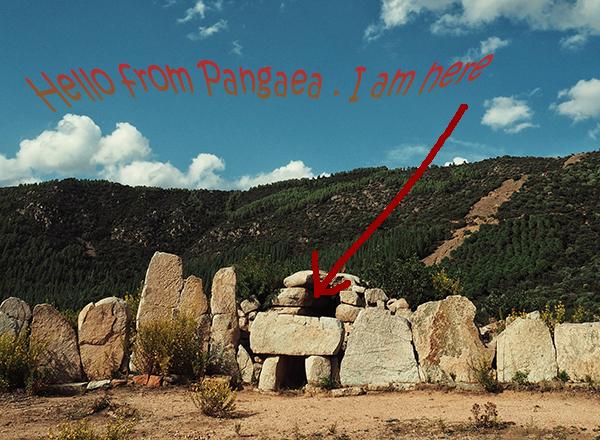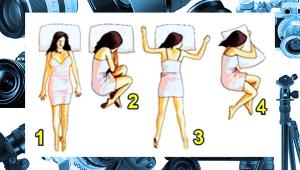Why Neanderthals Left Practically No Photographs: Here Are The Top 5 Theories

Anthropologists recently revealed that the DNA of modern man differs from Neanderthals, Denisovans and other early human prototypes by a mere 1.5 to 7%. Witnessing lack of driver courtesy on the NY State Thruway, I could have told you that without ever even looking at a genome. But these new facts beg the question: “Why do so few photographs remain?”
(Photo: Umanoide/unsplash.com.)
We now know that ‘thals brushed their teeth, painted inside their caves and carved squiggly lines on animal bones. At least we’re pretty sure. Apparently they dressed alike, enjoyed small-batch lager and had beards—sort of like the guys who live in Portland, Oregon, today.

Whatever they may have done wrong, Neanderthals ditty bopped around for 300,000 years. That’s three times longer than our fragile species has existed so far. Scientists speculate that the reign of modern humans overlapped with them for perhaps 5,000 years. During this time, it’s been confirmed, the two groups enjoyed some delightful afternoons, or enjoyed some afternoon delight, and as a result some of us have rather brushy eyebrows and frontal bossing (heavy brow ridges).
Here are the top 5 theories why Neanderthals did not take many photographs.
1. Lack of Attractive Subjects
The prehistoric landscape was littered with fresh fossils, unicorn poop and unripened coal. And there was so much nocturnal light pollution caused by the nonstop barbecues. Birthdays hadn’t been invented yet, and virtually no one went on vacation. So what was there to photograph in the first place, if we rule out holidays, travel and street photography?
Women?
Well, yes, but Mrs. Neanderthal was too vain, too shy and not too cute. You’ve been to a museum, right? What do you think? Mrs. N was no beauty contest winner. Looks like she didn’t even own a razor. I’m jus’ sayin’.
Interstellar alien visitors?
Some were willing to pose, sure, but they only spoke Trigonometry; sustained communication was impossible. Besides, they spent all of their time vivisecting cattle, building pyramids and teaching astronomy. Boring!
Pets?
If you wanted to lose a finger, sure. Even Middle Paleolithic bunny rabbits were viscous.

2. Time Management Issues
Competition with other undiscovered Homo erectus, Homo sapiens and similar primate species kept them so busy that they had little time to develop their darkroom skills. E6 labs were far-flung and Kodak picked up only once every-other-century.
There were so many plants and animals to name—why, naming the birds alone took forever because they all looked alike. Same with fishes and the bugs. It was enough to cause a panic attack.
Not to mention, having recently learned to walk upright, maybe they were just too damn tired. I can imagine them just sitting around, waiting to evolve.
3. Physiological Shortcomings
Neanderthals had terrible vision. Many Paleo-ophthalmologists believe that their vision was primitive, and the selection of eyeglass frames was piddly. Therefore the selective breeding instinct of finding an attractive mate was severely impaired. So much so, in fact, that ‘thals had the reputation of sharing their cave with anyone who could make a stone spear point.
4. Format Wars
Every camera brand had its own proprietary lens mount, used a unique battery and created incompatible Raw format files. Oh, wait—that’s not possible, is it? That’s a formula for extinction. Consumers would never stand for that.

5. Video Was Their Thing
Living hectic lives evading ice sheets, battling predators and discovering which weeds were smokable, Neanderthals may have captured the action on video instead of shooting still images. Some have even gone so far as to postulate that caves initially were early home theaters, not places to dwell. Movies, they say, were so popular that the denizens of prehistory began staying there 24/7 and often napped during double features. This may explain why I always fell asleep as soon as the projector started clicking when I was in elementary school—bad DNA.
Opposing Views
Contrarians assert that Neanderthals, Denisovans and other early kin—perhaps as far back as H. habilis—did indeed take pics, but they used their phones (instead of a real camera) and never made backup copies. Cloud storage was tempestuous and vapid at best. So hundreds of thousands, maybe even millions, of photographic images simply vanished. No prints, no permanent record of their lives and times. Sad. A lesson learned? Doesn’t seem like it.
If a human lives 80 years, that’s roughly equivalent to 0.004% of the time that has passed since the first appearance of Homo erectus. To say that life is fleeting is like saying that it’s hard to find a borough in New Jersey that doesn’t have at least one diner or six. Mankind will likely not endure another 300,000 years but our photographs could.
The next time you open your image browser, try to see the photos through the eyes of someone who may not be born for another hundred years. Someone who shares your genes. Someone you will never meet, even though you contribute to their creation. That person may want to know a little something about you. Maybe that vision will persuade you to create archival prints or at least redundant backups.
—Jon Sienkiewicz
(As an Amazon Associate, Shutterbug earns from qualifying purchases linked in this story.)

















































